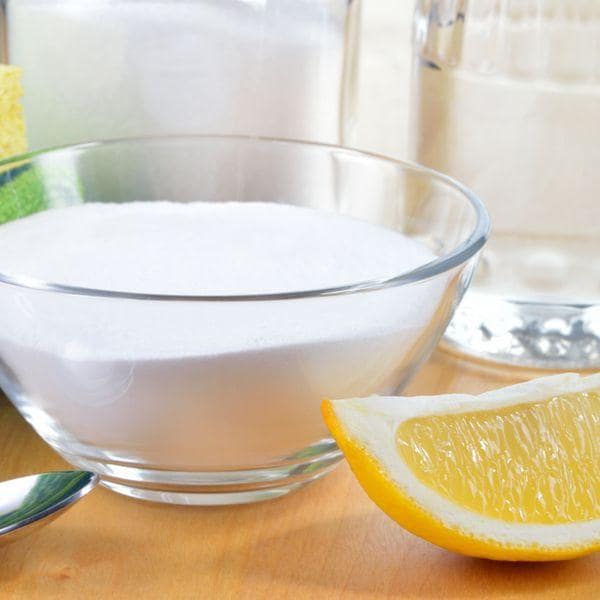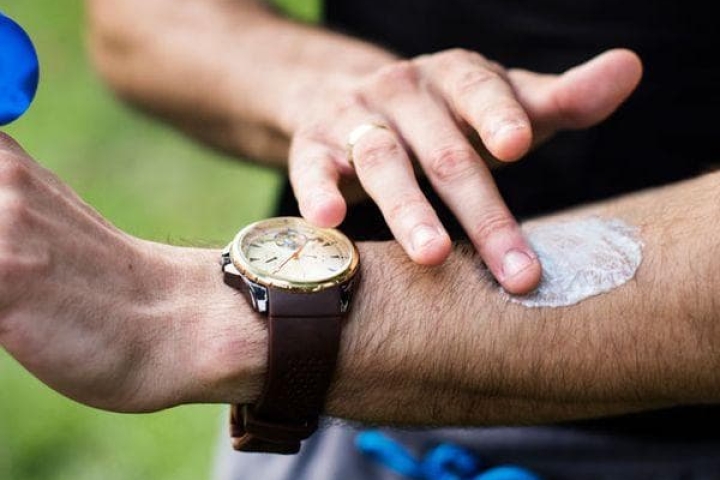Tips for Detoxing Your Home Plus Natural & DIY Cleaning Products
Clean Your Home with Nature-Based Products
Did you know that you share your home with up to a thousand chemicals?1 We spend a lot of time in our homes, and so do our families. Many of us take time to detox our minds and bodies and opt for supplements made from real food sources to get everything we need and nothing we don’t.
But despite all the effort to keep our bodies toxin-free, we often overlook how we can clean and refresh our home naturally, using naturally-derived cleaning products.
So, why not do everything possible to make your home the healthy, nourishing space you deserve? Here are some tips for how to clean and refresh each area of your house.
Entryway Cleaning Tips
You probably know that wearing shoes in the house can track in dirt and bacteria, but did you also know about herbicides and pesticides? A study funded by the Environmental Protection Agency discovered that these substances are often carried into our homes on our shoes and transfer from there to our carpets.2
How can you avoid tracking dirt, bacteria, and chemicals into your home?
- Always take your shoes off at the door.
- Invest in a rug or mat for both the outside and inside of your entryway to help catch residue.
- Limit indoor/outdoor pet access, especially after treating your lawn.
- Research natural ways to rid your lawn of pests to avoid using chemicals.
Also, avoid storing pesticide containers indoors. The EPA reports that 80% of most people’s pesticide exposure occurs indoors and that as many as 12 pesticides have been detected in the air in homes due to being tracked inside and stored indoors.3
Quick Tip: Sprinkle baking soda on your entryway rug and let it sit for a few hours to absorb odors.
Detoxing and Cleaning Your Living Room
If you've ever searched for ways to keep stains off your sofa or carpets, you're probably familiar with stain-guard coatings. These coatings, used to protect furniture and carpets, contain chemicals known as fluoropolymers, which the EPA says can degrade into perfluorochemicals (PFCs).4 These nearly indestructible synthetic compounds, also known as super plastics, have been found in both people and the environment.5
Be mindful of the potential for carpets, furniture, and textiles to harbor hidden toxins. If possible, choose wood floors, natural linoleum, or ceramic tile, and opt for natural wool and cotton rugs instead of synthetic ones. When possible, avoid furniture and carpet pads that contain foam treated with known toxins.
Chemists have recently introduced an environmentally-friendly, non-toxic flame retardant for treating foam and textiles, but chemicals in older flame retardants may still be released from products into your home.6,7
Other ways to achieve a clean, refreshed living room include using a HEPA-filtered air purifier to clean your air, and mopping and vacuuming at least once each week. Choose a vacuum cleaner that also uses HEPA filters, which help minimize dust and dander in the air.
Tips for a Clean, Refreshed Living Room
- Avoid using stain-guard on your furniture, carpets, or textiles.
- Prefer wood, natural linoleum, or tile floors over carpeting.
- Select natural wool and cotton rugs over synthetic ones.
- Choose furniture and carpets not treated with known toxins.
- Vacuum and mop weekly.
- Opt for HEPA filters for both your vacuum and air purifier.
Quick Tip: Try using lemon oil to polish your furniture.
Clean Kitchen Tips to Reduce Toxins
Kitchens are particularly important when it comes to reducing toxins in your home and maintaining cleanliness. Many of us store cleaning supplies in the kitchen, but it’s also where we prepare and store food, and access our drinking water. Therefore, giving your kitchen a little extra attention can significantly reduce toxins.
Surfaces that come into contact with your food are a priority. Those super plastics mentioned earlier that are used in stain-repellants are also found in non-stick cookware coatings. Many non-stick coatings include perfluorinated chemicals (PFCs), which researchers are studying for their potential health impacts.8 Since these chemicals can persist in the human body for years and their health effects are still not fully understood, it’s advisable to choose cookware without non-stick coatings.8
Also, be selective with your plastics. Some contain Bisphenol A (BPA), which has been linked to numerous health issues.9 Opt for glass or BPA-free plastics and avoid using plastic wrap.
Quick Tip: Clean your wood cutting boards with full-strength apple cider vinegar.
Natural Kitchen and House Cleaning
Opting for cleaning supplies free of chemicals is a significant step towards keeping toxins out of your home. You can also make your own natural cleaners.
Cleaning with vinegar, essential oils, baking soda, and other natural ingredients is not only better for you but also more environmentally friendly than chemical cleaners.
Essential Oils for House Cleaning
- Use essential oils to add fragrance to homemade cleaning sprays (like the apple cider vinegar spray below). Lavender essential oil works well with vinegar-based cleaners.
- Add a few drops of essential oil to an unscented, vegetable-based liquid soap, plus washing soda (optional) for a natural dish soap. Rosemary essential oil is wonderful for this. Thyme essential oil works well too, and has cleaning properties that may be especially helpful in the kitchen.
- Use a few drops of eucalyptus essential oil when cleaning your sink with baking soda (instructions below). Or use pine essential oil in your baking soda floor cleaner.
- Mix 10-15 drops of tea tree oil or sandalwood essential oil into a spray bottle with a cup of distilled water for a natural room spray.
- Combine citrus extracts like lemon essential oil or orange essential oil with a solution of ¼ cup of washing soda dissolved in half a gallon of water to clean oven hoods, exhaust fans, and small appliances that attract build-up.
Learn more in Essential Oils and Aromatherapy: Beginner's Guide to Using Essential Oils for additional ways to use essential oils to refresh your home and beauty routine.
Cleaning with Apple Cider Vinegar
- Mix equal parts apple cider vinegar and water to make an all-purpose cleaner for kitchen surfaces.
- Use full strength apple cider vinegar to clean wood cutting boards.
- Apply full strength to polish silverware and for spotless stainless-steel appliances.
- Pour ½ cup of apple cider vinegar in the bottom of your dishwasher before running to get sparkling dishes.
- Use a 1:1 solution to degrease kitchen surfaces, clean your refrigerator, or to soak product jars you want to reuse.
Apple cider vinegar has many additional uses for health and home. Learn about them in 30 Ways to Use Apple Cider Vinegar.
Cleaning with Baking Soda
- Sprinkle baking soda on pots and pans to help clean baked-on residue.
- Use ½ cup in a bucket of warm water and use it to brighten a dull tile floor, or use a little baking soda to spot clean floors.
- Pour a cup of baking soda followed by a cup of vinegar into your kitchen drain for a natural way to unclog your sink.
- Make baking soda into a paste with a little water and apply the paste to stains on your granite countertop and let it sit overnight, then wipe clean. Or use the paste as a scrub to remove coffee and tea stains from mugs and pots.
- Keep an open container of baking soda in your fridge, and sprinkle a little in your trash can before putting in the bag to ward off smells.
Cleaning with Distilled White Vinegar
- Use ½ cup of vinegar in half a gallon of warm water to mop floors (you don’t need to rinse!).
- Add 1½ cup to the bottom of your dishwasher to help clean dishes and your washer.
- Pour a cup down your sink drain once a week to freshen it up. Let it sit for 20-30 minutes before running cold water.
- Use vinegar to clean surfaces that commonly get a film—like for cleaning the inside of the microwave, a glass oven door, or windows."
- You can also add a tablespoon of vinegar to a cup of water and microwave it on high for a few minutes until steam forms on the inside of the glass, then wipe food stains away.
Tips to Reduce Toxins in the Kitchen
- Avoid non-stick pans, since non-stick coatings may contain harmful chemicals.8
- Use glass or non-BPA plastics, avoid exposing food to plastic wrap, and keep plastics out of the microwave."
- Use natural cleaning supplies or make your own instead of purchasing chemical-laden cleaning solutions."
Tips to Clean Your Bathroom and Reduce Toxins
First, before addressing bathroom cleaning, consider the products brought into our bathrooms for personal care and beauty routines. To keep toxins out of your bathroom, and out of your body, examine the ingredients in your personal care products. Many products intended for personal care contain a surprising number of chemicals. One of those chemicals is triclosan, which is classified as a pesticide and has been linked to endocrine effects, developmental concerns, and more.10 Educate yourself on the chemicals that should not be in your personal care products. There are many of them. Choose all-natural, non-toxic personal care and beauty products instead."
Many of the same principles of detoxing and cleaning your kitchen and other areas of your home also apply to the bathroom, including using natural cleaners or making your own cleaning supplies. Baking soda is excellent for cleaning the toilet and removing hard water stains. You can also soak hair brushes in 1 teaspoon of baking soda and warm water. Vinegar helps remove soap scum and cleans mirrors. And you can use either vinegar or baking soda to tackle bathroom mold."
Natural Mold Cleaners
- Add undiluted, distilled white vinegar to a spray bottle, spray it on mold and let it sit for an hour before wiping."
- Dissolve half a tablespoon of baking soda into a cup of water and add to a spray bottle, spray and scrub with a brush. Rinse and then re-spray, but let it dry this time without rinsing to help deter new growth."
- If you have a particularly stubborn spot of mold, try using hydrogen peroxide. Spray it on and leave it for 10-15 minutes before scrubbing."
Also, replace your plastic shower curtain or liner with a healthier option. That strong scent from many plastic shower liners comes from PVC, which contains vinyl chloride. According to the EPA, vinyl chloride is a known concern for human health.11 Choose a shower curtain made of nylon, organic cotton, or hemp instead. And opt for natural bathroom rug materials, such as wool or cotton, instead of synthetics."
Tips for a Clean, Non-Toxic Bathroom
- Examine the chemicals in your personal care products and choose natural products instead."
- Replace your cleaning supplies with natural options, and use essential oils to freshen up."
- Choose a shower curtain that is not made of plastic or PVC. Nylon, organic cotton, and hemp are good choices."
- Select a bathroom rug made of wool or cotton instead of synthetics."
A Clean, Refreshing and Relaxing Bedroom
Encourage healthy rest and recovery by taking steps to clean and detox your bedroom. You can start by keeping the air clean, and this applies to your whole home as well. When weather permits, open your windows as much as possible to let in fresh air. And use plants to help naturally detoxify the air you breathe."
According to a NASA study, air purifying plants can significantly help filter out common toxins found in the home, such as formaldehyde, which is sometimes present in chemicals used to make or treat carpets, furniture, and foam within furniture and mattresses.12 Areca palms, bamboo palms, Boston ferns, rubber plants, and English ivy are all excellent choices for houseplants that help purify air."
Also, opt for candles made from soy or beeswax instead of paraffin, which is a by-product of petroleum. According to the EPA, candles are a major concern for indoor air pollution.12
Carry the approach to non-toxic cleaning over to your bedroom, including the detergent you use to wash your clothing and bedding. Choose a natural laundry detergent or make your own with washing soda and add a few drops of your favorite essential oil to the detergent bin in your machine for a little extra freshness."
And finally, an important aspect of detoxing your bedroom is keeping your electronic devices elsewhere. Charge your phones and tablets in another room, and consider banishing them from the bedroom altogether. Why? Blue light exposure from your devices before bedtime can disrupt your melatonin production and sleeping patterns; and the short, energetic waves from blue light may affect the health of your eyes.13
Learn more in Important Facts about Blue Light and Eye Health.
Cleaning Tips for the Bedroom
- Open windows whenever possible to let in fresh air."
- Add some plants that help clean the air."
- Use non-toxic laundry detergent or make your own with washing soda and essential oils"
- Use soy or beeswax candles instead of paraffin."
- Digital detox your bedroom by keeping devices elsewhere."
Quick Tip: Make a lavender-scented surface cleaner with equal parts apple cider vinegar and water, plus a few drops of lavender essential oil and use to clean bedroom surfaces."
Naturally Cleaning and Detoxing Your Home
Our homes are the last place we expect to encounter toxins, but they can hide in some unexpected places. We hope these tips will help banish toxins from your home."
While you have cleaning on the mind, it’s a good time to clean out your pantry too, and restock it with healthier options. Read Pack Your Pantry





Leave a comment